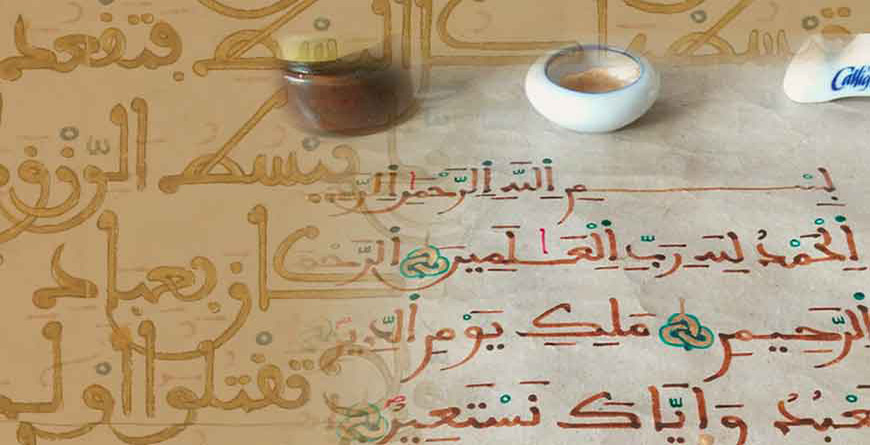You may wondering why there are many different styles of Maghribi script and you may be even confused about it. Honestly, I share the same confusion with you because these Maghribi scripts have evolved in categories and styles within the same category.
The Maghribi script, referring to the western territories of the Islamic world, specifically North Africa and Southern Spain, it characterised by its cursive style with vertical letters and half circles shapes. It is written using a sharp pointed pen which produces cursive, evenly thin lines and strokes. However, with the Mashriqi (eastern) styles, the pen is cut at a chiselled angle which produces uneven lines and strokes. It is also said by scholars that the Maghribi script descended directly from the angular Kufic script and as a result inherited many of its characteristics. After time, the Maghribi script evolved its own unique style and sub-styles, while preserving some characteristics of the Kufic script as shown in the manuscript examples below.
Maghribi Mabsut:

Maghribi Mabsut (Figure.1) is the most commonly known script used in North Africa. It is predominantly used for writing Qur’an. It is characterised by its rounded letter forms, extended horizontal features and final open curved – half circles below the baseline. The Fa in the Maghribi script is written with a dot underneath it ڢ and the Qaf is written with only one dot on the top ڧ
Even in the Mabsut style we may find names and styles sush as:
- African: Malian Nigerian, Mauritanian, Tunisian and so on.
- Andalusian
Thuluth Maghribi:

This style is similar to the Mashriqi Thuluth but has slight differences in some cursive strokes used for book titles, chapter headings (usually coloured in red, blue and green) and religious texts such as prayer manuals and supplications as in Fig 2.
Mujawhar:

Characterised by its very thin script, this style was used to write the Sultan’s official correspondences, many books, and government communiques, legal documents including business and marriage contracts, among other formal documents as in fig 3.
Al Qandusi Style:

A strong and bold script developed by Muhammad Bin Al-Qasim Al-Qundusi in the 19th century. fig 5. Written in string and bold letters it was a very unique contemporary style in his time, Letter forms are written either using s normal bamboo Qalam then enlarged and filled with ink or ourlined in some part of letters then filled with ink. up to now there are few examples online you may google for them as I do not have the permission to share them here, nor there are resource on how to write this unique style, the good news I am doing some writing and research to share with you soon.
